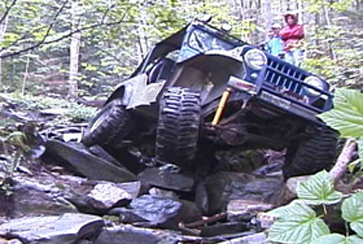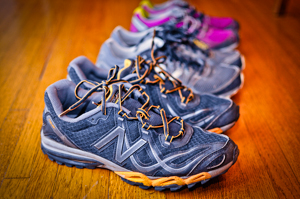Boots have been the standard for backpacking since… boots were invented. In fact, the quintessential picture of backpacking in the 70s and 80s is a tall external pack and hiking boots. Although boots have come a long way with materials and weight, they still play a large role in traditional backpacking today.
However, the backpacking arena is changing; high-top hiking boots are quickly becoming the exception, especially in the lightweight and ultralight weight backpacking camps.
Think about it: Hiking boots are designed to keep your feet safe, warm and support your ankles. Twenty years ago, before the arrival of lightweight and ultralight gear, most of us were forced to wear boots to help support our ankles under heavy loads. They were a necessity.
Our ankles, however, are not designed to withstand heavy loads, especially loads over 25% of our own body weight. Remove the extra weight on your back and feet and our ankles are able to do the job they are designed to: flex with the terrain and absorb energy.
 If you have ever seen a 4-wheel drive Jeep rock crawling, you will notice how the wheels turn, flex and twist in odd angles; they are absorbing energy. If the wheels were ridged, the energy from the wheels would be forced to transfer to the chassis, putting undue stress on the vehicle. It would also prevent the Jeep from “crawling” over rocks successfully. The reason the Jeep is able to efficiently maneuver through rough terrain is due in part to its wheels flexing and absorbing the uneven ground.
If you have ever seen a 4-wheel drive Jeep rock crawling, you will notice how the wheels turn, flex and twist in odd angles; they are absorbing energy. If the wheels were ridged, the energy from the wheels would be forced to transfer to the chassis, putting undue stress on the vehicle. It would also prevent the Jeep from “crawling” over rocks successfully. The reason the Jeep is able to efficiently maneuver through rough terrain is due in part to its wheels flexing and absorbing the uneven ground.
Our ankles work similarly; under lighter loads, wearing low-top shoes like trail running shoes — instead of boots — our feet, with their complex bone and joint structure, are able to work as they are designed.
However, lock your feet and ankles into a ridged boot and any turning of the foot from a rock, sand, gravel or twig will transfer that energy straight to your knees, causing undo stress to your knees and ultimately causing pain.
Our feet have over 26 bones and 33 joints, and if we constrict and/or immobilize any part of the nature function of our foot’s mechanics, we are not allowing our ankles do their job.
 Trail running shoes
Trail running shoes
After hundreds of miles of hiking and backpacking (including cross-country rock-hopping over talus and scree) with trail running shoes, I have never once injured my ankle in any way, even with pack loads at 20 pounds. My ankles may turn and bend some, but that is what ankles do.
I am not saying that you cannot injure an ankle. Wearing low-top shoes vs. high-top means you will want to be a little more aware of the terrain. For that reason among others, I also use trekking poles to reduce the impact on my legs, knees, ankles, and feet.
Trading boots for trail runners will free up your ankles, giving you more agility, comfort and a whole lot less stress to your knees. As the old adage says, “A pound on your foot is like five pounds on your back…”
Try it.

